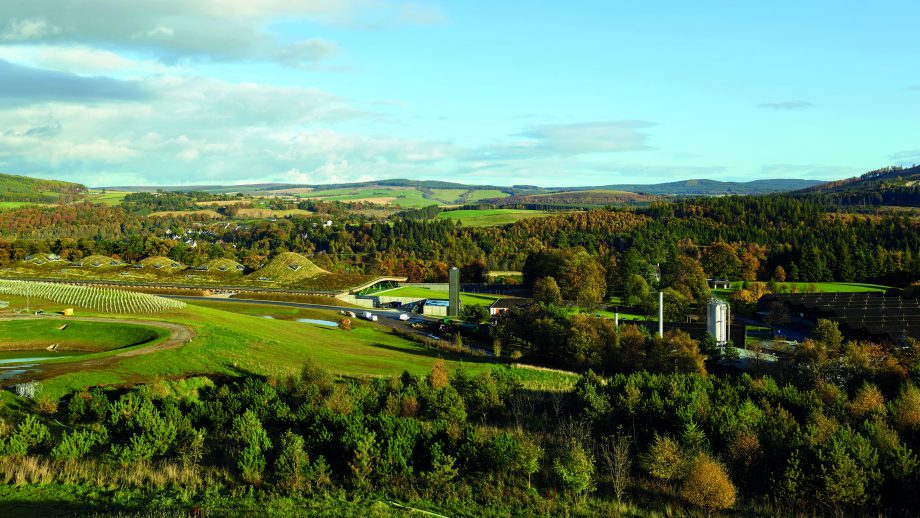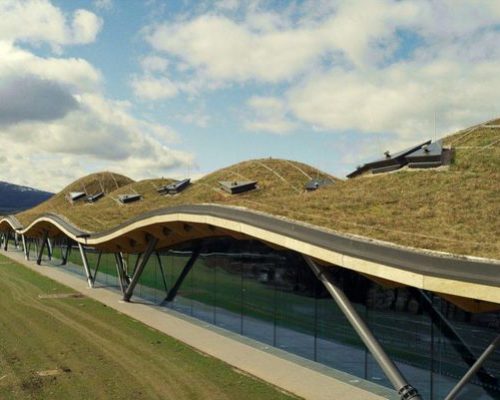Edrington will be a carbon-neutral business by 2030 for our distilleries, offices and travel. We will reduce our greenhouse gas emissions by at least 70% compared to 2016 levels and aim to lock up any balance through local habitat creation and restoration predominantly in Scotland. We will work with our suppliers to reduce their greenhouse gas emissions. Our long-term ambition is for all Edrington activities and those of our supply chain to be net-zero for greenhouse gases.
We’ve set ambitious targets to reduce our greenhouse gas emissions in our industry, recognising both the importance of every sector taking fast action on climate change and our long-term leadership. Using 2016 as a benchmark, we aim to reduce our greenhouse gas emissions to a maximum of 12,700 tCO2e by 2030. We recognise that achieving this 70% reduction in the greenhouse gas emissions that we are directly responsible for will be challenging and we anticipate that any remaining emissions will be offset responsibly through investing in environmental projects, primarily in Scotland.
Our 2019 greenhouse gas footprint from business operations and travel was 19% lower compared to our 2016 benchmark year, while our production grew by 5% and our distillation capacity grew 8%. Our progress has been primarily driven by reductions in gas use and efficiency measures. The opening of our new distillery on The Macallan Estate fuelled by Estover’s Speyside combined heat and power (CHP) plant was a particular highlight.
We have reported our emissions in line with the Greenhouse Gas Protocol Corporate Standard. This document reports Scope 1 and 2 emissions from our operations as well as the majority of Scope 3 emissions from business travel in line with the Streamlined Energy and Carbon Reporting requirements (SECR). Our wider Scope 3 emissions include agriculture, packaging and other indirect emissions sources. We aim to report voluntarily on these in future years, and also to work with our supply chain to take action to reduce these emissions.
| Global Greenhouse Gas emissions and energy use data (2019-20) | |||
| UK | Global | Total | |
| Scope 1 emissions (tCO2e) | 17,960 | 3,730 | 21,690 |
| Scope 2 emissions (tCO2e) | 3,839 | 3,853 | 8,692 |
| Total gross Scope 1 & Scope 2 emissions (tCO2e) | 21,799 | 7,583 | 30,382 |
| Total Scope 3 business travel (tCO2e) | 188 | 3.722 | 4,000 |
| – Air | 3,712 | 3,712 | |
| – Road
|
100 | 100 | 200 |
| – Rail | 88 | NA | 88 |
| Total Scope 1,2 & 3 emissions | 21,987 | 12,395 | 34,382 |
| Total energy consumption (kWh) | |||
| Electricity | 15,019,236 | 6,050,907 | 21,070,143 |
| Gas | 66,991,390 | 17,575,675 | 84,267,065 |
| Other energy | 19,232,256 | 488,320 | 19,720,576 |
| Business travel (vehicles)[1] | 395,257 | 395,257 | 790,514 |
| Intensity ratio (kgCO2e) gross Scope 1 & 2 | 0.95 kg CO2e per litre of spirit produced | 0.7kg CO2e per litre of spirit produced | 1.6 kg of CO2e per litre of spirit produced |
We also calculated our intensity metric against the litres of spirit we produce. We currently produce 1.6 kg of CO2e per litre of spirit produced.
Our Scottish distilleries are on track to meet the Scotch Whisky Association’s 2020 target of improving energy efficiency by 7.6%. Edrington’s distilleries in Scotland are 11.3% more efficient than the 2008 base line year when measurement started. In addition, in 2019 we sourced 30% of our energy requirements from renewable sources in the UK, significantly ahead of Scottish Government targets.
To support our objective of becoming carbon neutral for the greenhouse gas emissions we are directly responsible for, we aim to lock up any balance through ecological habitat creation and conservation predominantly in Scotland, capturing and storing carbon that would otherwise be emitted to the atmosphere. In addition to the offset of carbon emissions, this approach will help protect wildlife, preserve or expand open space, and restore biological communities.
Examples of current schemes include our partnership with the Royal Society for the Protection of Birds (RSPB) to restore and maintain the peatland on Hobbister Moor, near our Highland Park distillery as a bird sanctuary. The moor is home to a wide variety of birds and is conserved as a moorland and saltmarsh breeding hen harriers, curlews and short-eared owls. This work forms part of the ongoing 10-year relationship with the RSPB supporting biodiversity and habitat restoration.
We are reducing the amount of peat used in our distilling through innovative production techniques and more efficient use of the peat that we cut. In 2019 we cut 140 tonnes of peat from Hobbister Moor, our sole source of peat for Highland Park Single Malt Scotch Whisky. This is less than half of our licenced volume and was alongside a 5% increase in production volumes.
Since 2008, we have donated £680,000 to the RSPB to protect black grouse habitats and other native flora and fauna as part of The Famous Grouse brand’s relationship with the RSPB. This includes planting 185,000 trees, restoring 67ha of peatland matched with the Peatland Action Fund and operating as a key funder in the purchase of the RSPB Crannach reserve. Key improvements in biodiversity have been achieved through the investments, including a 30% increase in black grouse populations across four Scottish and English reserves and a tripling in the number of lekking males which grew from 18 in 2009 to 59 in 2015.
[1] Estimated figure based on 100tCO2e, assumed diesel vehicles using the UK Government Greenhouse gas reporting conversion factors, 2019. Available here



